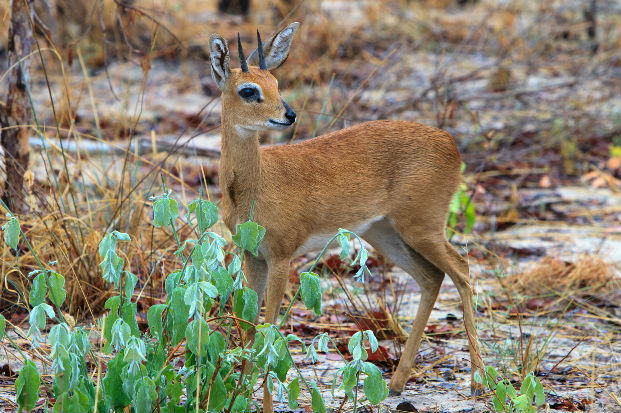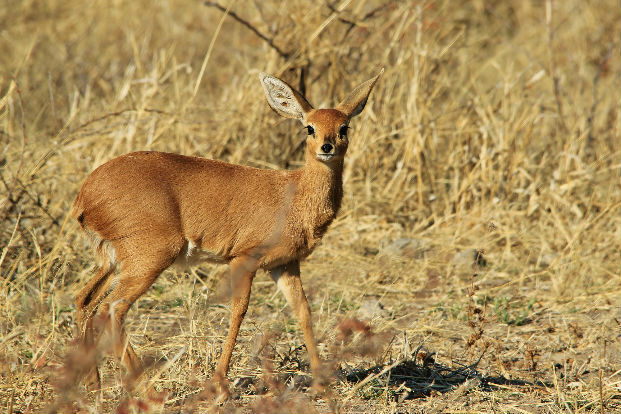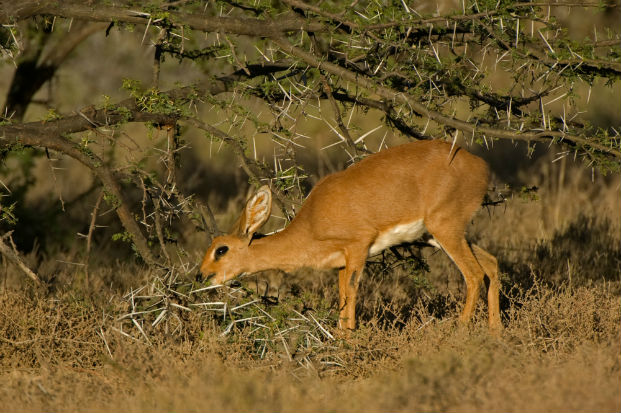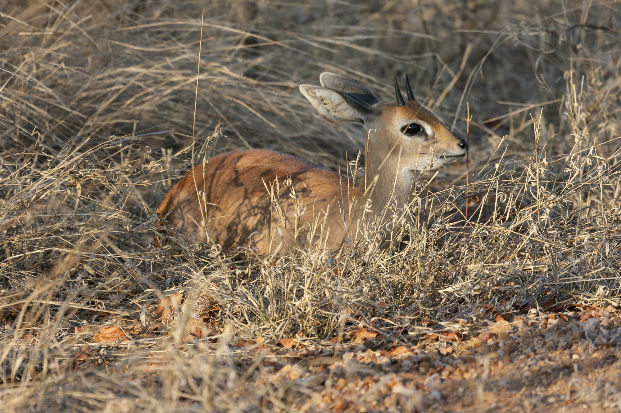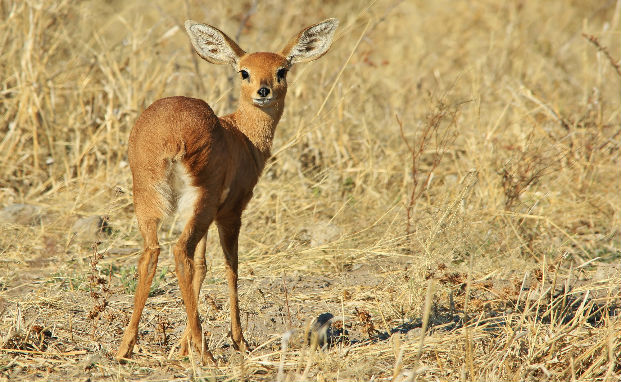
A small antelope with a red-brick colouration that lives in pairs on a defended territory. However, they rarely associate with one another. They prefer grasslands that have scrubby thickets which provide cover. As long as they have green food they can be independent of water although if it is available they have been known to drink.
Vote for the fact you find most fascinating
Despite steenbok having large glands below their eyes they do not like other antelope use them for scent marking. Instead they will use glands between their hooves for this purpose.
The steenbok name is derived from the Afrikaans word “steen” meaning stone due to its brick-red colouration.
Steenbok form mating pairs which share a defended territory. However, they forage and rest away from one another. They may act in this way as it is less conspicuous in the open habitat where they live.
Steenbok are known to hide in old aardvark holes when cover is sparse.
Steenbok browse and graze depending upon what is available due to their location and the season. When grazing they are able to rapidly increase the micro-organisms in their stomach that are required to breakdown the fibre.
Both male and female steenbok will scrape the ground before, during and after defecating and urinating. Sometimes this will bury the dung but not always. This is believed to be a territorial action performed by both the male and female steenbok.


